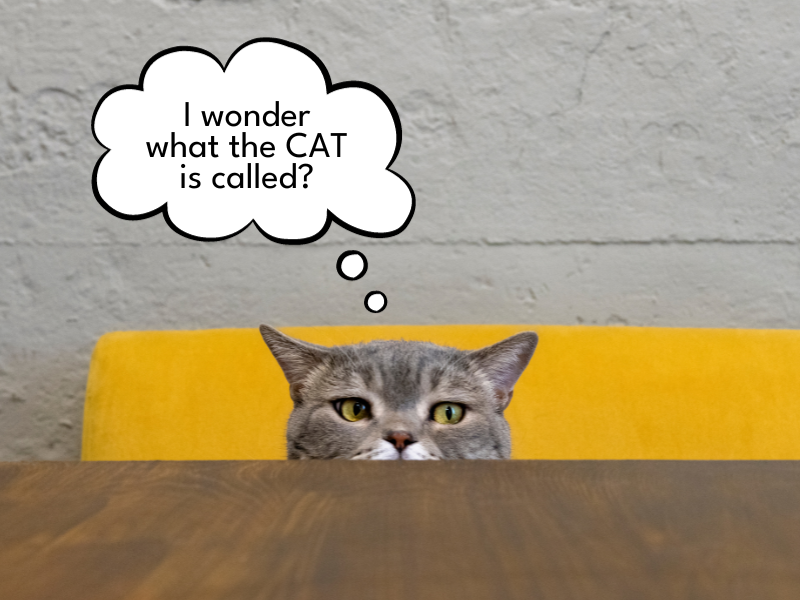Another (Confusing) Story for EYFS Professionals…
Since our first blog about the world of early years acronyms there have been changes.
New acronyms have appeared and some have changed – so read on and see how many you know!
CAUTION: Attempting to read this story if you don’t work in the early years may lead to severe confusion and a possible headache! You have been warned…
If you need a bit of help, scroll down for a glossary or download our updated Early Years Acronyms Cheat Sheet.
Are you sitting comfortably? Let’s begin…
So, FYI, J4F, BY&M…
Picture the imaginary scene.
A number of people are sitting in the room - parents, carers, practitioners, school governors, trainee teachers.
Good afternoon, I would like to welcome you all here today.
I am the EXECHT of this school and another in the LA. With me today are the DHT, AHT and SENCO and EYFS lead, all part of the SLT. In addition, we have COG from our GB.
We would like to tell you about our school before your child starts with us in our EYFS unit, either in the nursery or reception.
We have a PAN of 60 each year for reception. Our EYFS has a team of EY specialists.
The lead has QTS and a PGCE and is working towards her NPQEYL and, working alongside her, we have an HLTA, TAs and PWs.
They are supported by our DHT who has recently completed her NPQH training. To support our children with SEND we have an LSA with a specialist qualification in PECS. She currently supports children who have an ASD diagnosis.
I thought PECS was what you got at a gym?
Safeguarding is a high priority for us. All staff have undertaken a DBS check and follow KCSIE. We follow safer recruitment procedures and ensure we have an up-to-date SCR. We have staff who have undertaken additional DSL training and they regularly update their CPD by attending courses on PREVENT, CSE and other relevant topics.
Within the EY we follow the EYFS, covering all seven areas of learning. We place high importance on PSED, along with CL, LIT and MD.
On entry we use the WellComm screening to assess if any children need support with their CL. Through the DLP project we can access support from the SLT for these children.
We follow the COP should we identify children who may need extra support and we use the graduated response. We work with other professionals including the EP service, CAT team and SLT to ensure all children receive the support they need and, if necessary, we can initiate an EHCP.
I’m pleased we are all wellcomm…
Children have access to the outdoors throughout the day and the development of our Forest School is a priority identified on our SIP this year.
Children learn through play, and we use online learning platforms to share what they have been doing; this is fully compliant with GDPR.
At the end of the EYFS, before moving to KS1 and the NC all children will be assessed against the ELGs which make up the EYFSP. The number of children who achieve a GLD is above the national average and our children with EAL and SEND achieve well.
Children in their nursery year are funded via EEE funding, the number of hours being dependent on your circumstances.
All children in reception are entitled to a free meal at lunch time. In the nursery year they need to pay unless they are entitled to FSM. It is important you claim FSM as this means the school can claim EYPP which is funding to support learning. Please check your entitlement on the DWP website.
I wonder what the CAT is called?
For those who need it, we also have a PVI setting on site who are able to provide OSC provision. This is a fee-paying service. We also offer EEE provision for eligible 2-year-olds. This part of our setting follows the EYFS curriculum and is also subject to the OFSTED inspection process.
As an inclusive school we value the cultural diversity of our children. We have our RRSA silver award embedding the UNCRC through all we do in school.
We are a base for ITT and have trainee teachers from the local SCITT.
We are active within our networks and regularly take part in research projects to benefit our children. Most recently these have been accessed via the SPH supported by the EEF.
Should you have any questions please do ask!
Acronyms
An acronym is an abbreviation formed from the initial letters of other words and pronounced as a word. They can enable us to communicate more quickly in both the written and spoken form.
We all use acronyms in all areas of life and they have a place, but do we consider how we use them, especially in our practice?
Do you remember when you started your current role? Did you speak the ‘language’? You may have been familiar with some ‘EYFS’ acronyms, but what about the acronyms that were unique to the culture of the organisation?
If you work in partnership with other professionals and agencies they may use a completely different ‘language’ to the one you’re used to. If we, as professionals, struggle to understand the many acronyms used in our own work environment, how might this feel for a parent at a meeting?
Acronyms, while they have their uses, can make life harder. People often feel uncomfortable asking – “what does that mean?” - especially when everyone else seems to know what’s going on. The truth is they probably don’t know themselves but won’t admit it!
Sometimes the acronym doesn’t relate to the actual meaning. EEE, for example, is often referred to as ‘Triple E’ but that still doesn’t tell us that EEE actually means Early Education Entitlement; in fact we might still not be sure what that is unless we work in early years! (EEE refers to a child’s entitlement to free early years hours in a setting).
Pause for Reflection
Is SLT to do with language or leadership?
Try not to use acronyms any more than necessary – they can create a barrier to communication. Remember your audience – parents vs practitioners in training vs colleagues; these different groups will have different levels of understanding of certain acronyms and abbreviations, adjust your language (bother verbal and written) accordingly!
Young people and children have their own acronyms – it’s part of growing up, but as professionals and parents are we aware of the acronyms and shorthand used by young people and their meaning?
Remember: not all organisations/groups share the same acronyms and some acronyms/abbreviations may have completely different meanings – SLT, for example, can mean Senior Leadership Team or Speech and Language Therapy!
So, ask and keep asking if you can’t follow the anonyms.
BFN!
GLOSSARY
ASD - Autistic Spectrum Diagnosis
AHT - Assistant Head Teacher
CAT - Communication and Autism Team
CPD - Continuing Professional Development
CL - Communication and Language
COG - Chair of Governors
COP - Code of Practice
CSE - Child Sexual Exploitation
DBS - Disclosure and Barring Service
DHT - Deputy Headteacher
DLP - Developing Local Provision
DSL - Designated Safeguarding Lead
DWP - Department of Work and Pensions
EAL - English as an Additional Language
EEE - Early Education Entitlement
EEF - Education Endowment Foundation
EHCP - Education and Health Care Plan
ELG - Early Learning Goals
EP - Educational Psychologist
EXECHT - Executive Head Teacher
EY - Early Years
EYFS - Early Years Foundation Stage
EYFSP - Early Years Foundation Stage Profile
EYPP - Early Years Pupil Premium
FSM - Free School Meals
GB - Governing Body
GDPR - General Data Protection Regulations
GLD - Good Level of Development
HLTA - Higher Level Teaching Assistant
ITT - Initial teacher Training
KCSIE - Keeping Children Safe in Education
KS1 - Key Stage 1
LA - Local Authority
LIT - Literacy
LSA - Learning Support Assistant
MD - Mathematical Development
NC - National Curriculum
NPQEYL - National Professional Qualification for Early Years Leadership
NPQH - National Professional qualification for Headship
OFSTED - Office for Standards in Education
OSC - Out of School Club
PAN - Planned Admission Number
PECS - Picture Exchange Communication
PGCE - Post Graduate Certificate in Education
PSED - Personal, Social and Emotional Development
PVI - Private, Voluntary and Independent
PW - Playworker
QTS - Qualified Teacher Status
RRSA - Rights Respecting Schools Award
SCITT - School-Centred Initial Teacher Training
SCR - Single Central Record
SENCO - Special educational Needs Coordinator
SIP - School Improvement Plan
SLT - Senior Leadership Team
SLT - Speech and Language Therapy
SPH - Stronger Practice Hub
TA - Teaching Assistant
UNCRC - United Nations Convention on the Rights of the Child
Non-Educational Acronyms
FYI - For your information
J4F - Just for fun
BY&M - Between you and me
BFN - Bye for Now
Download our FREE Early Years Acronyms Reference Sheet
Updated November 2023









